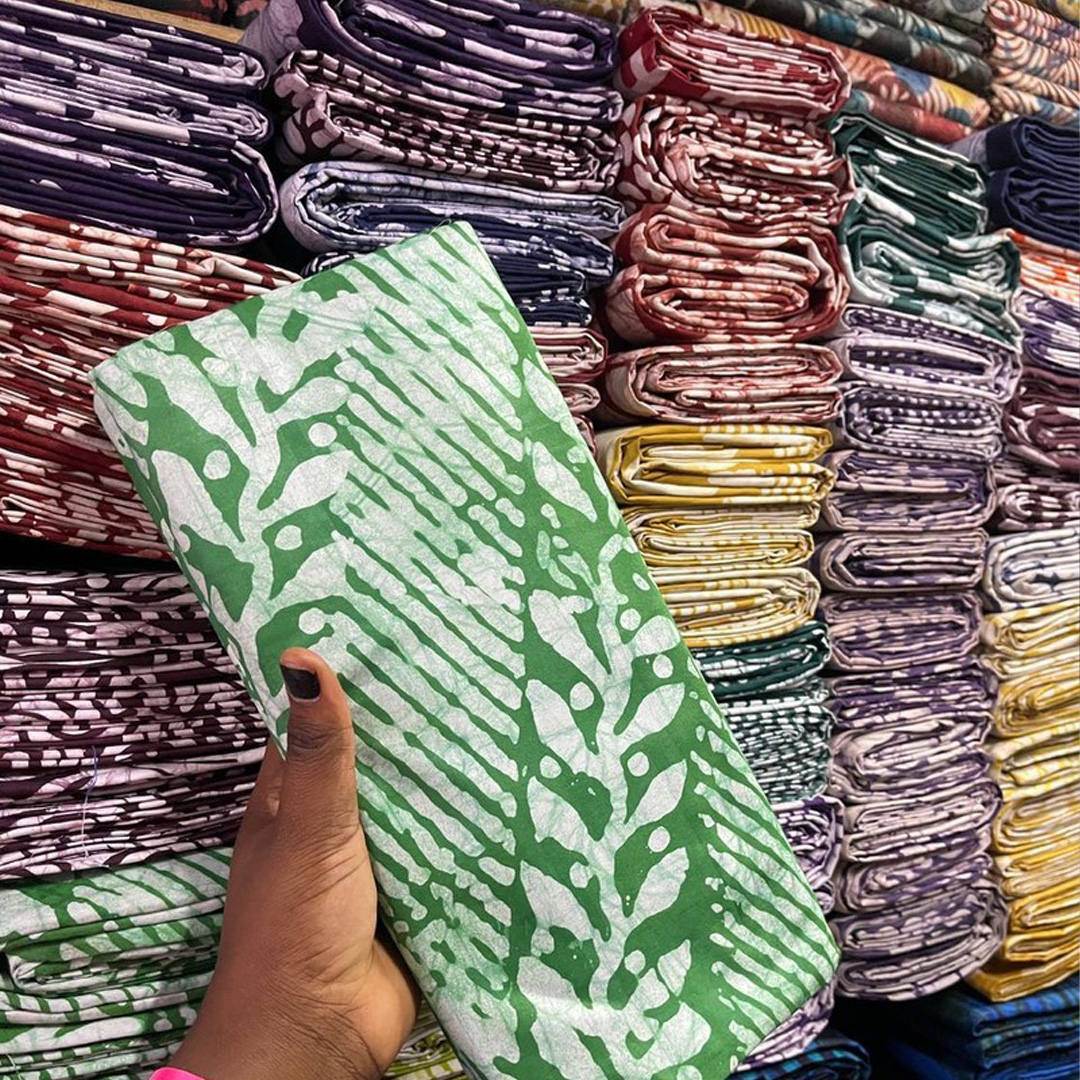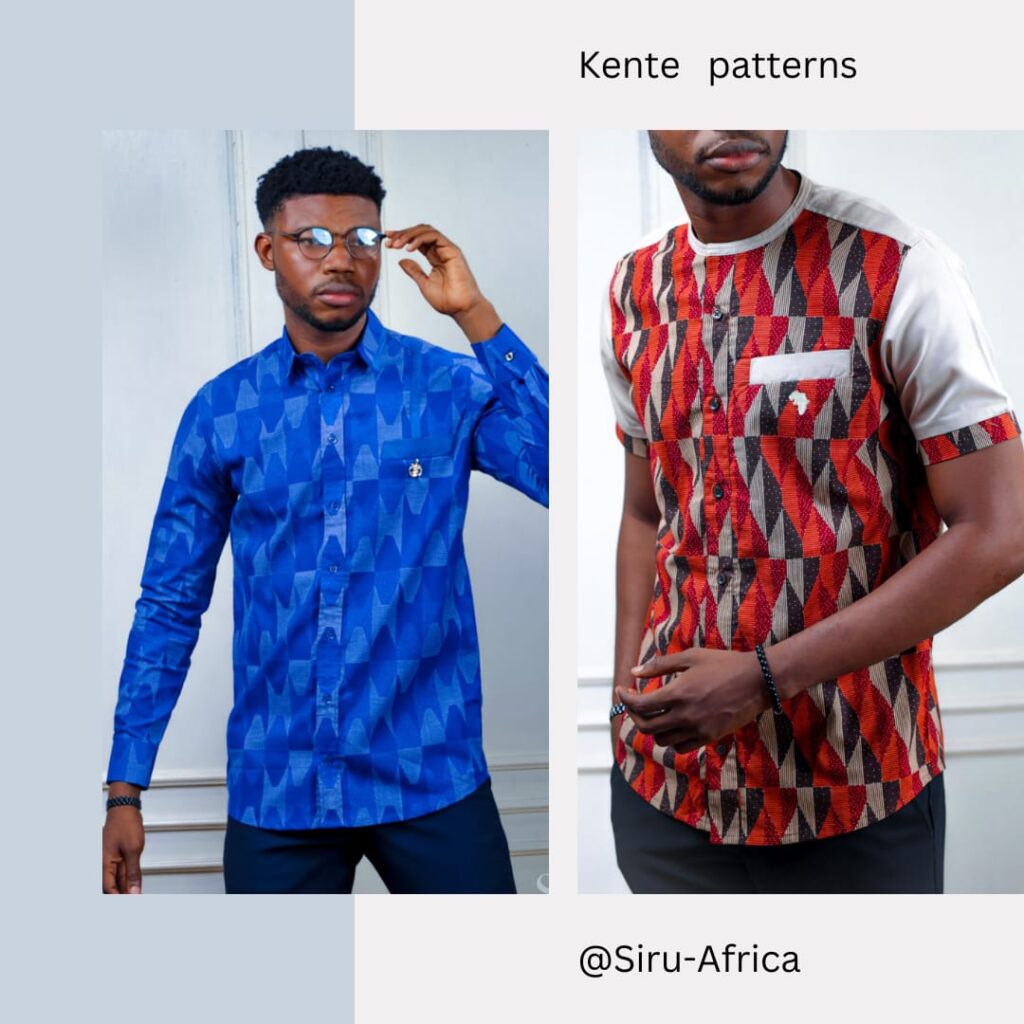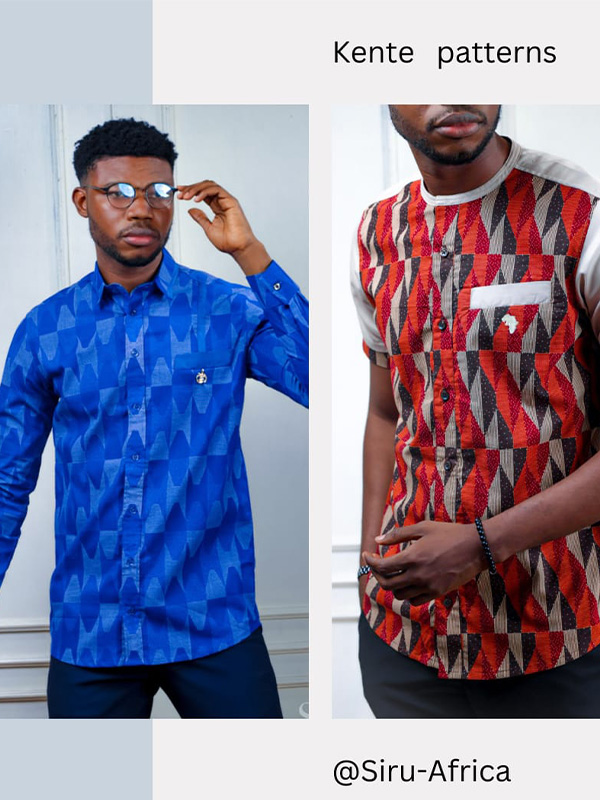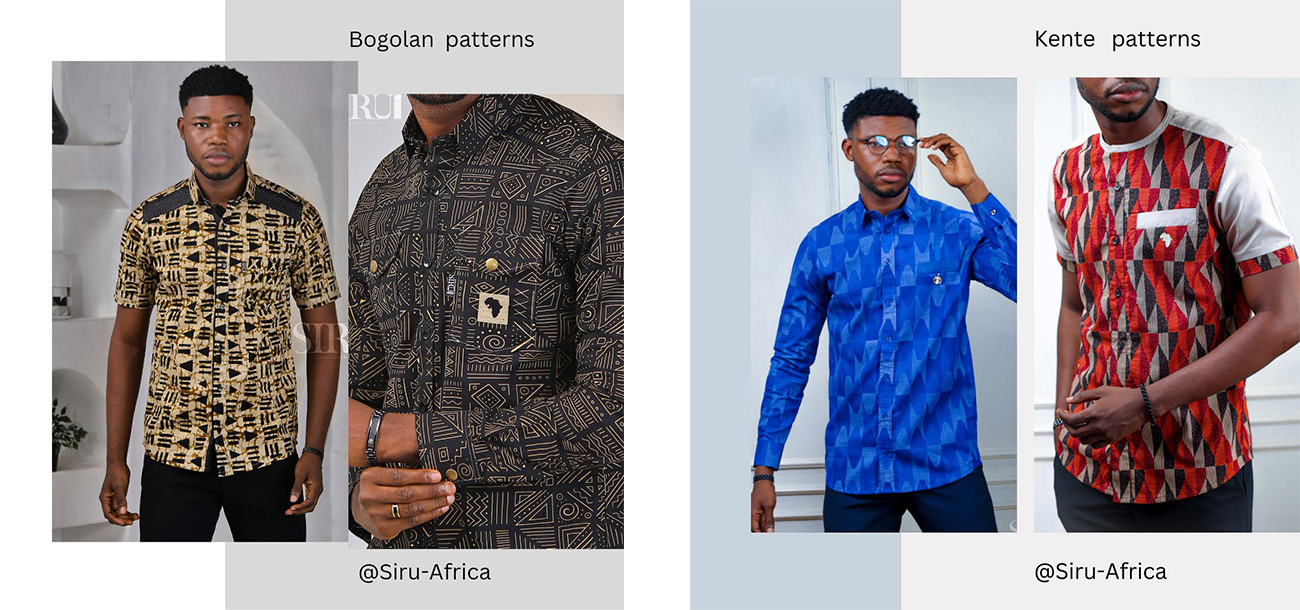AFRICAN FASHION HISTORY AND FUTURE WITH SIRU-AFRICA
Modern African fashion for men, women, and children have become increasingly popular in recent years and have captivated fashion enthusiasts around the globe. The rich heritage and cultural significance behind these garments have played a crucial role in their alluring appeal.
In this article, we will delve into the history of the traditional African fashion and fabrics, explore the influence of trade and colonization, discuss their contemporary presence, and explore the future of African fashion.
THE MOST POPULAR AFRICAN FABRICS FOR MODERN AFRICAN CLOTHING AND THEIR HISTORY
African fashion boasts a diverse range of traditional fabric and attire, each with its own unique characteristics. If you enjoy bold printed fashion, traditional dashikis, or vivid colors, you’ll love any one of the most popular traditional African print fabrics.
ANKARA PATTERNS


TRADITIONAL AFRICAN FABRIC #1: KENTE CLOTH
Kente cloth is a vibrant and intricately woven textile that originates from the Ashanti (Asante) people of Ghana in West Africa. Its history is deeply rooted in the cultural heritage of the Ashanti kingdom and holds significant symbolism and prestige within Ghanaian and African culture.
Legend has it that two Ashanti friends, Ota Karaban and Kwaku Ameyaw, learned the art of weaving by observing a spider weaving its web. They replicated the pattern and technique, which formed the basis of Kente weaving. The name “Kente” is derived from the Akan word “Kenten,” meaning basket, due to the cloth’s resemblance to woven baskets.
Like many traditional African patterns, each Kente design carries specific meanings and prestige. In fact, originally, Kente cloth was exclusively worn by Ashanti royalty and during special ceremonies like weddings and festivals.
Over time, its popularity spread beyond the Ashanti kingdom and became a symbol of Ghanaian cultural identity. It has transcended its traditional boundaries and is worn across the African diaspora and by people worldwide as a symbol of African heritage, pride, and identity.
Check out modern African dresses and clothing inspired by Kente cloth.
TRADITIONAL AFRICAN FABRIC #2: ANKARA
Kente cloth is a vibrant and intricately woven textile that originates from the Ashanti (Asante) people of Ghana in West Africa. Its history is deeply rooted in the cultural heritage of the Ashanti kingdom and holds significant symbolism and prestige within Ghanaian and African culture.
Legend has it that two Ashanti friends, Ota Karaban and Kwaku Ameyaw, learned the art of weaving by observing a spider weaving its web. They replicated the pattern and technique, which formed the basis of Kente weaving. The name “Kente” is derived from the Akan word “Kenten,” meaning basket, due to the cloth’s resemblance to woven baskets.
Like many traditional African patterns, each Kente design carries specific meanings and prestige. In fact, originally, Kente cloth was exclusively worn by Ashanti royalty and during special ceremonies like weddings and festivals.
Over time, its popularity spread beyond the Ashanti kingdom and became a symbol of Ghanaian cultural identity. It has transcended its traditional boundaries and is worn across the African diaspora and by people worldwide as a symbol of African heritage, pride, and identity.
Check out modern African dresses and clothing inspired by Kente cloth.

TRADITIONAL AFRICAN FABRIC #3: ADIRE
Adire is a traditional indigo-dyed fabric originating from the Yoruba people of southwestern Nigeria. The word “adire” translates to “tie and dye” in Yoruba, reflecting the unique dyeing technique used to create its distinctive patterns.
Adire was historically made by women in Yoruba communities, with patterns and motifs often carrying cultural significance and symbolic meanings. These fabrics were used for clothing, ceremonies, and as a form of artistic expression.
We celebrate the tradition of African Adire while incorporating modern takes.
TRADITIONAL AFRICAN FABRIC #1: MUDCLOTH
Mudcloth, also known as bogolanfini, has a rich history rooted in Mali, West Africa, particularly among the Bambara people. Its creation dates back centuries and holds cultural significance.
The traditional process of creating mudcloth involves a labor-intensive method of dyeing and decorating cotton fabric. Traditionally, men weaved the cloth on narrow looms, while women were responsible for dyeing and designing the fabric.
As with most traditional African fabrics, mudcloth designs, patterns, and geometric shapes are often symbolic, representing aspects of Bambara culture including history, religion, and social status. Mudcloth tells a story and is a form of communication.
Over time, the beautiful mudcloth has gained international recognition for its beautiful motifs and cultural significance.
At SIRU-AFRICA we honor these traditions and the cultural heritage while adding our own modern twist.







